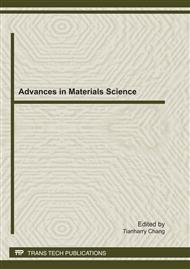p.159
p.165
p.171
p.176
p.182
p.186
p.193
p.198
p.203
The Inertia Force of Insect-Like Flapping Wing Micro Air Vehicle
Abstract:
We used the method of theoretical modeling and simulation to study how changes in wing kinematics influence the production of inertia forces and moments in flapping flight. We examined 153 separate sets of kinematic patterns that differed with respect to stroke amplitude, mid-stroke angle of attack, acceleration and deceleration duration of flip rotation and acceleration and deceleration duration of azimuthal rotation. For each pattern, we also calculated mean stroke- or quarter - averaged values of the inertia forces and force moments. The results of the analysis may be divided into three main point: (i) The insect wing’s chordwise inertia is much higher than its spanwise inertia--higher by an order of magnitude; (ii) The influence of inertia moment of azimuthal rotation is much higher than that of inertia moment of flip rotation, so the inertia moment of flip rotation can be ignored; (iii) Consider the flapping motion is approximate symmetrical if the stroke is symmetrical and the flapping motion is absolute symmetrical if the stroke and the flip is both symmetrical, then the inertia force can be ignored.
Info:
Periodical:
Pages:
186-192
Citation:
Online since:
September 2011
Authors:
Price:
Сopyright:
© 2011 Trans Tech Publications Ltd. All Rights Reserved
Share:
Citation:


